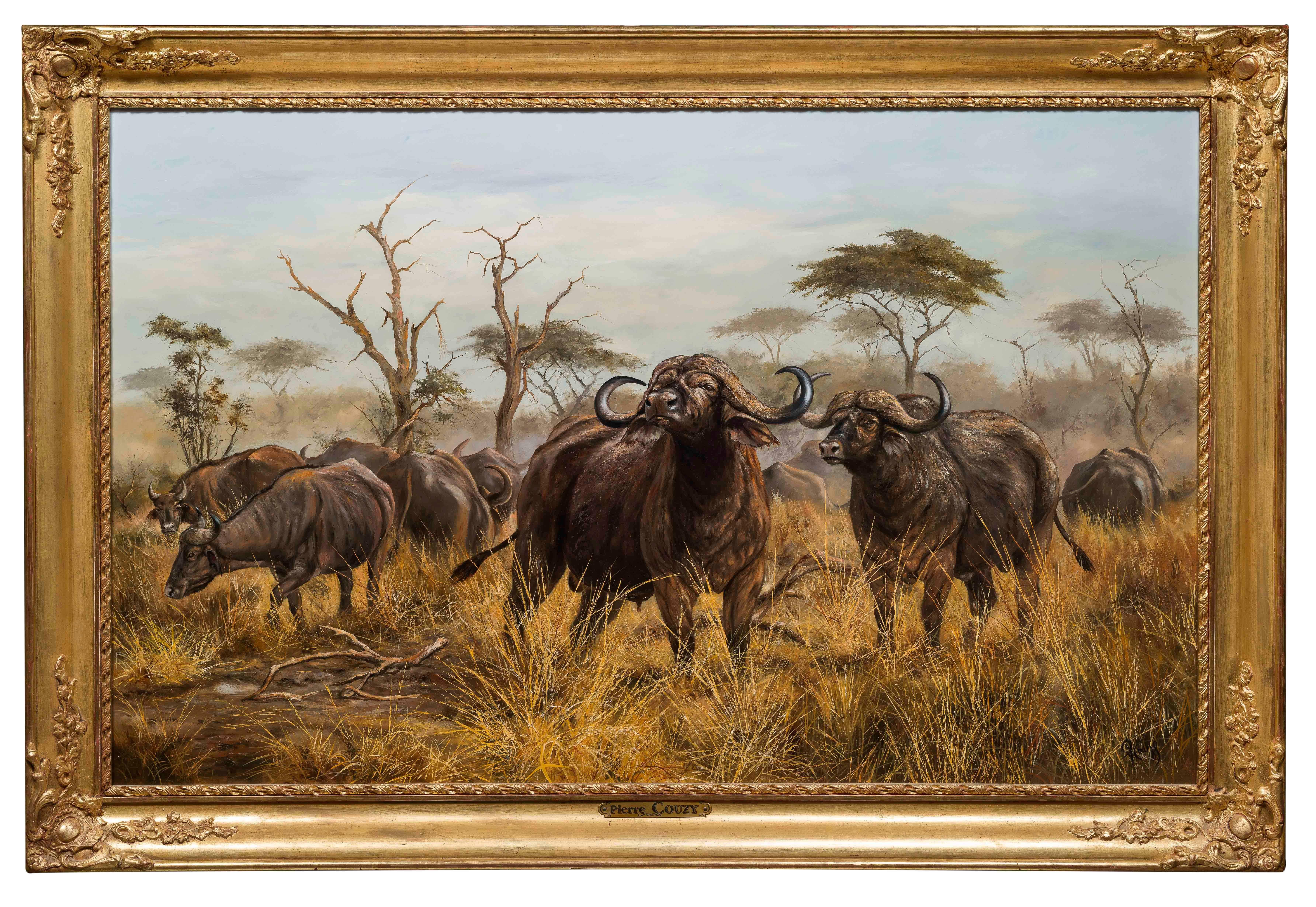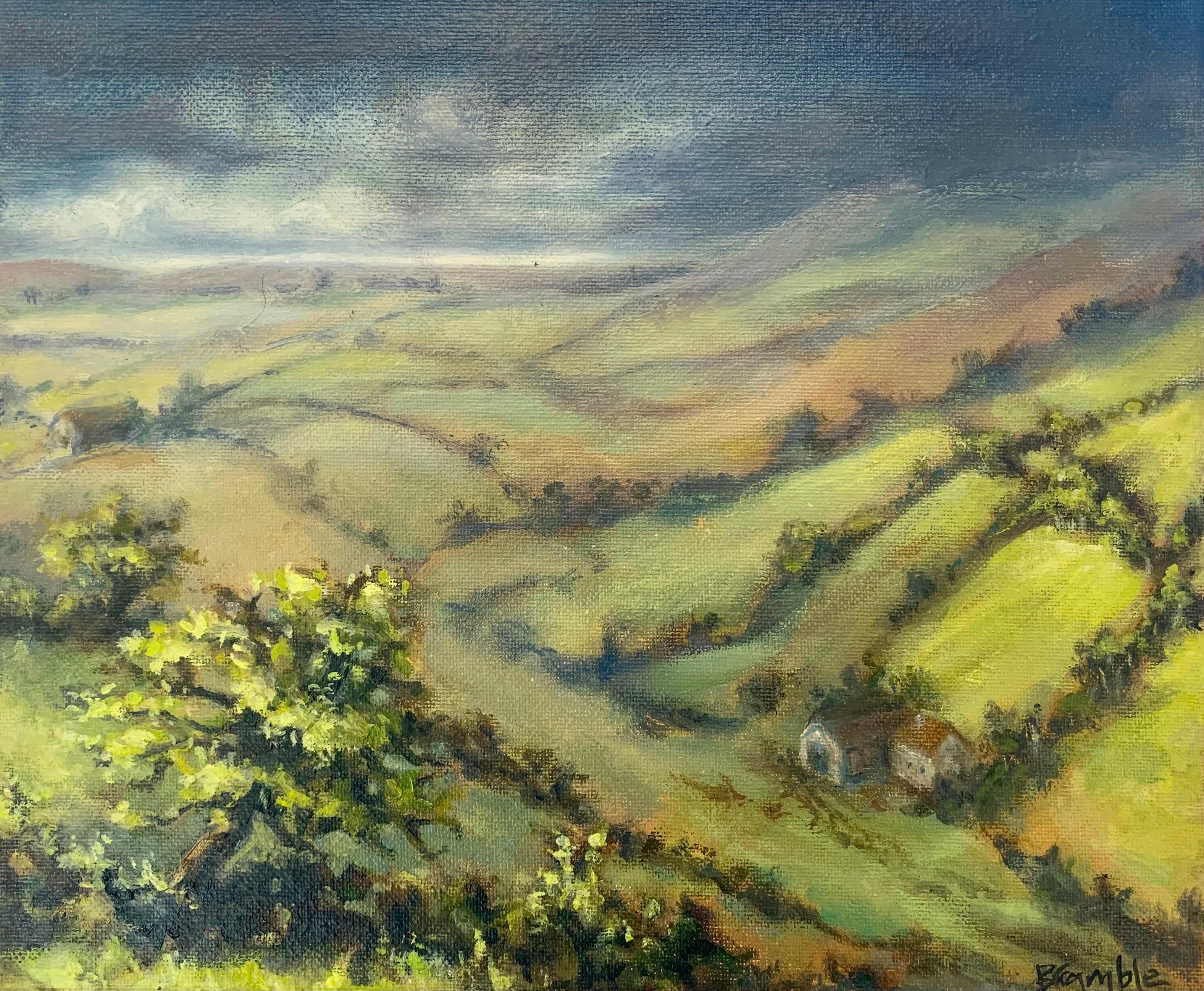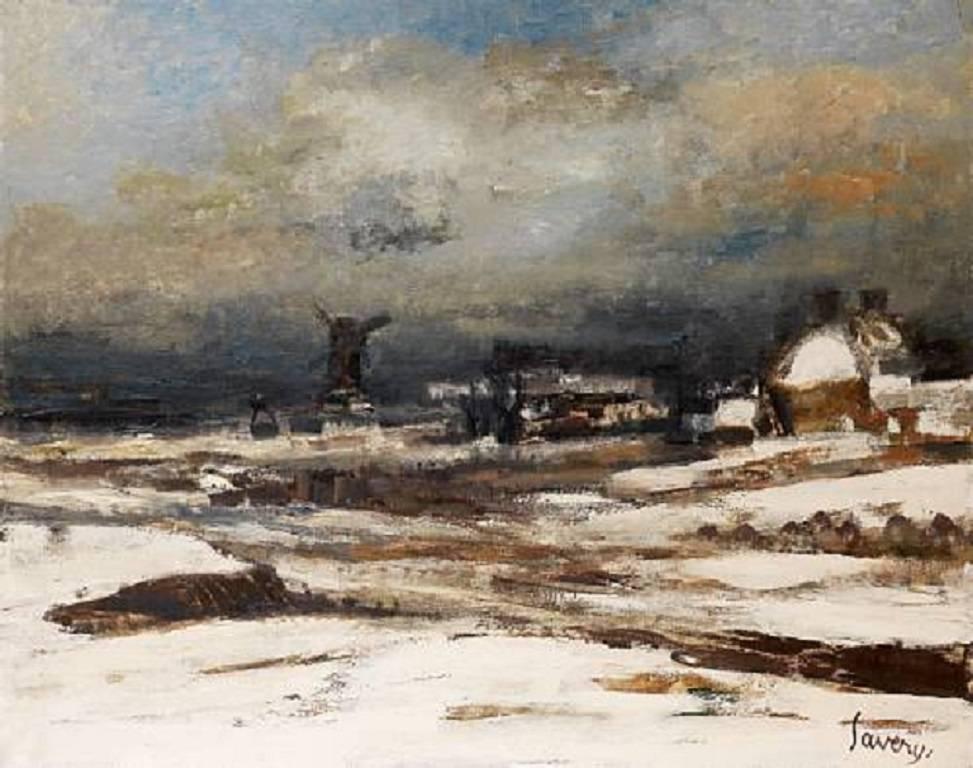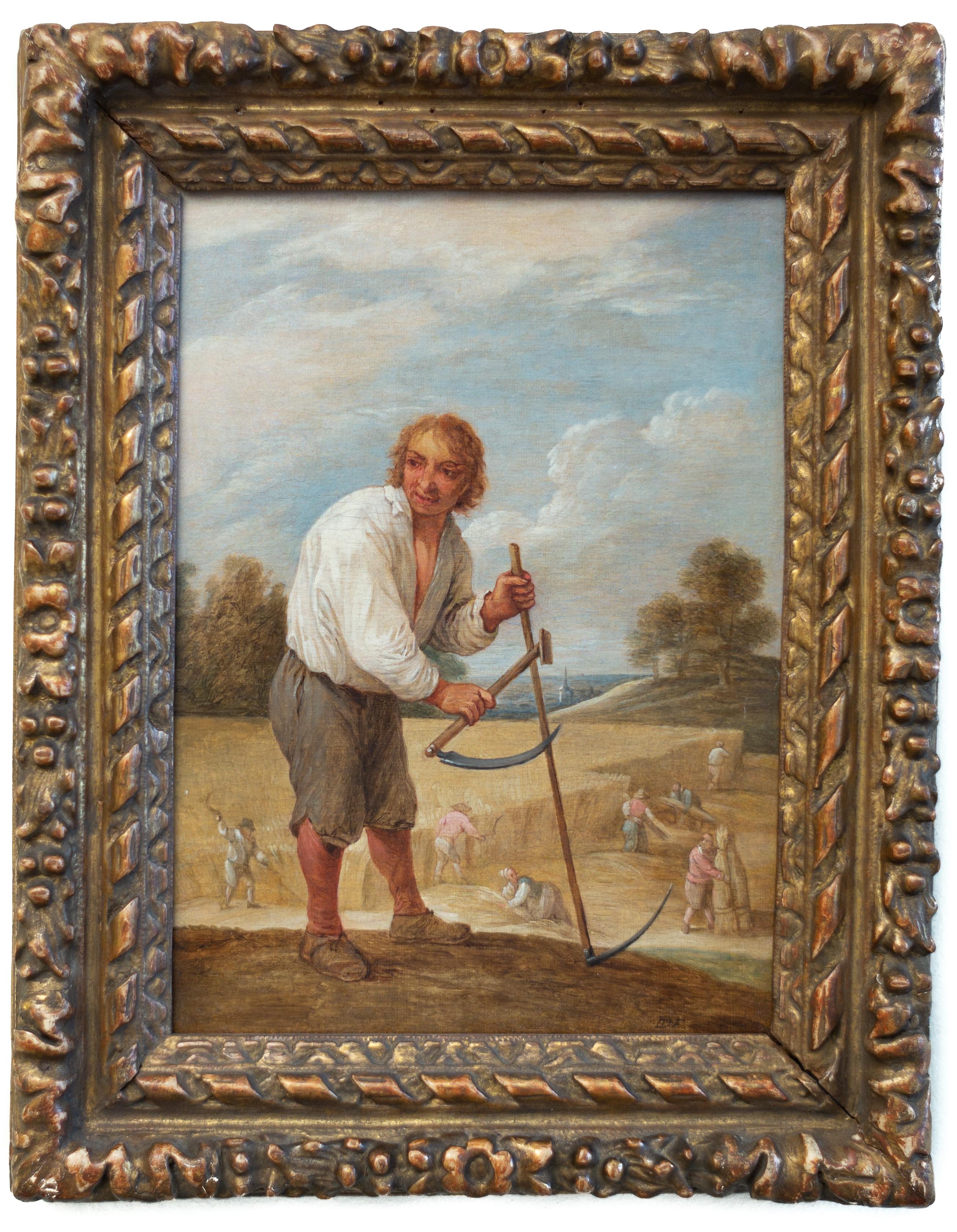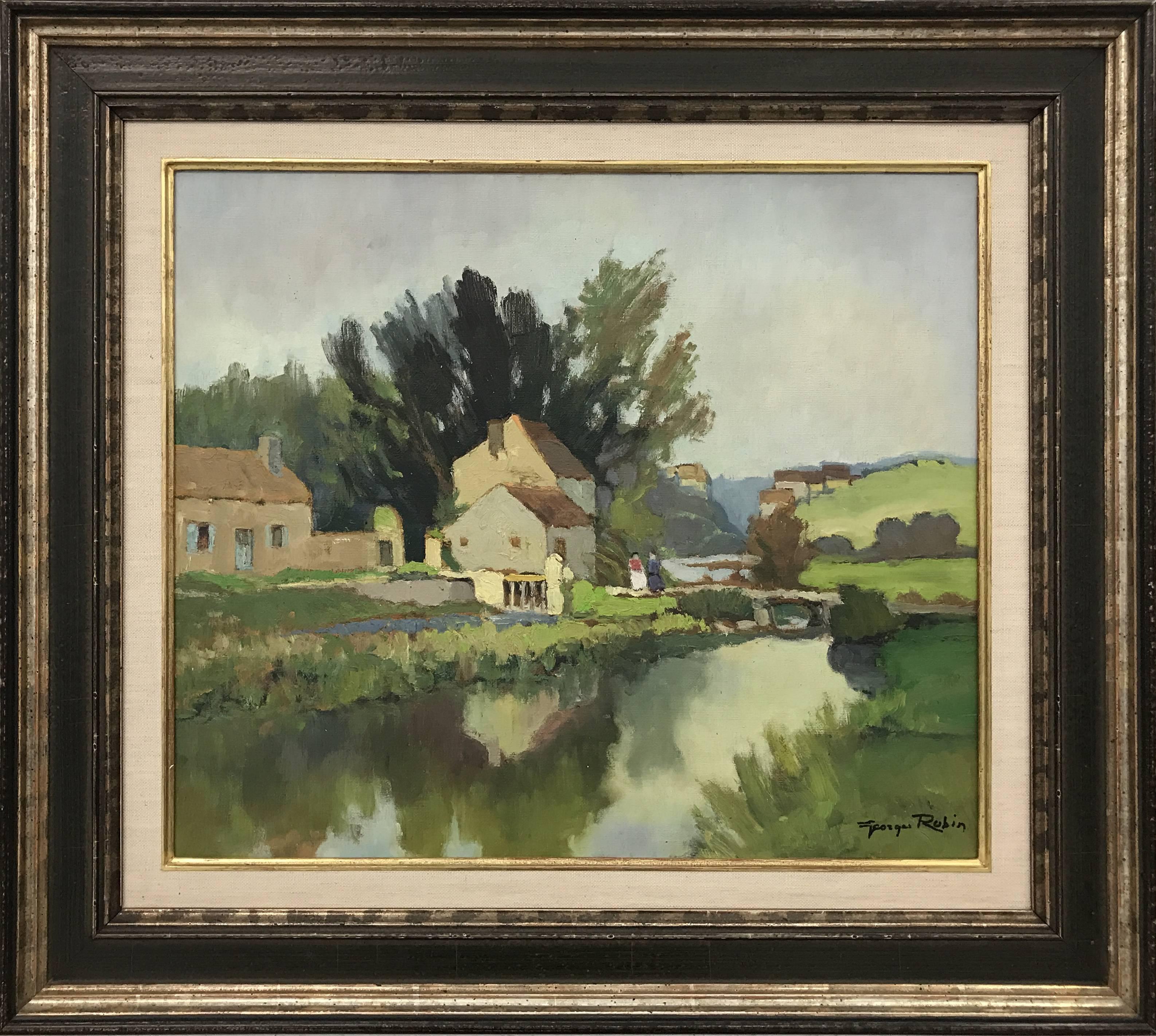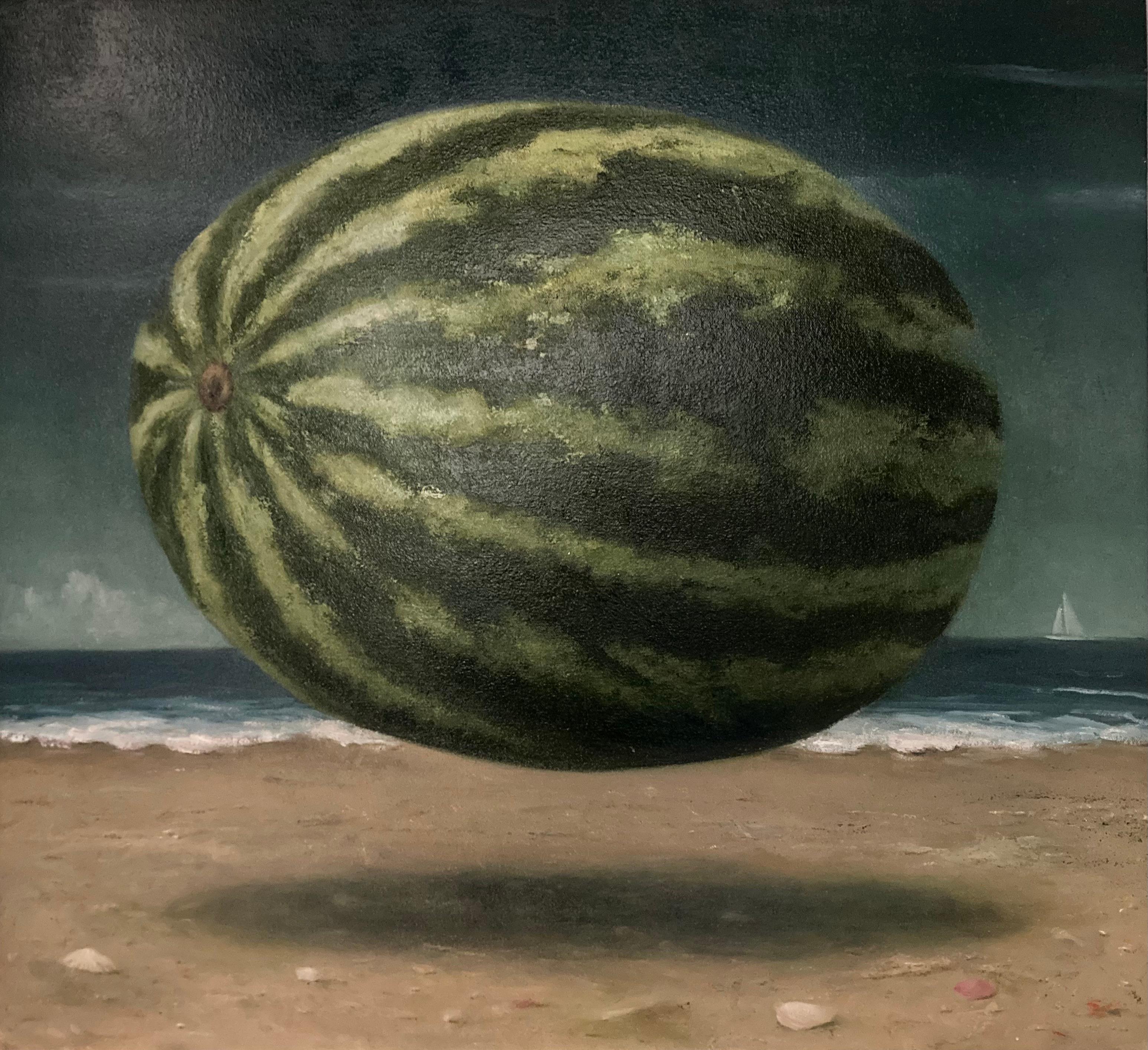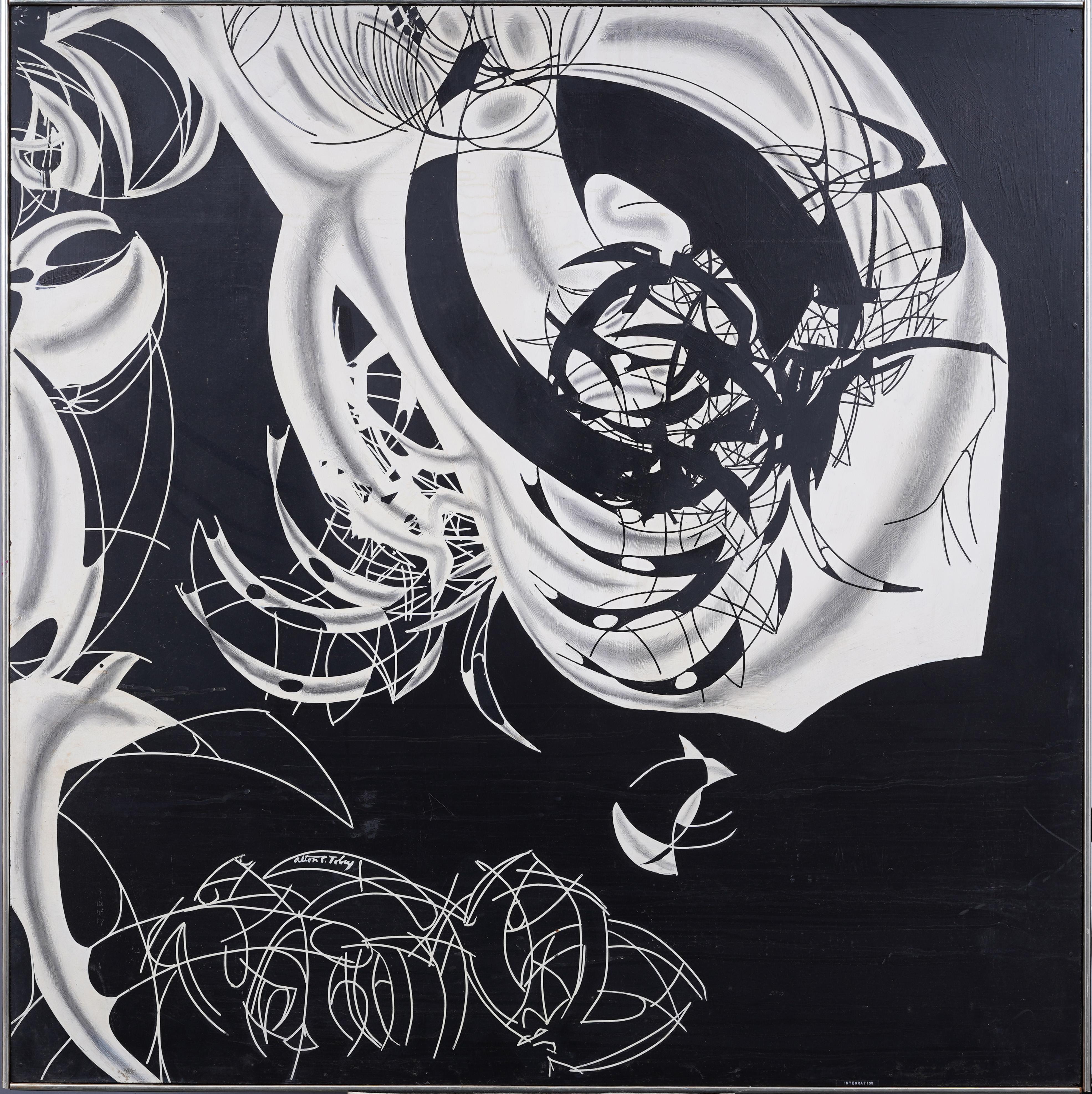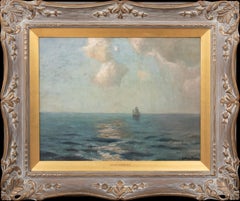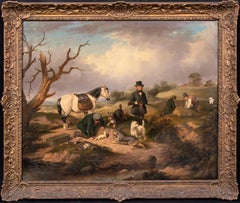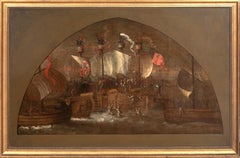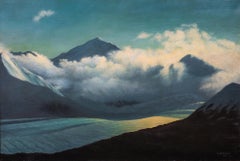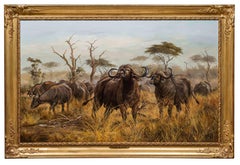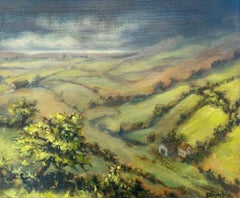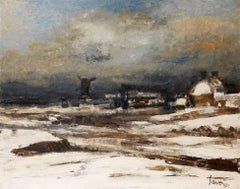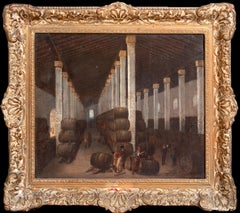
Wine Store, 19th Century French / Spanish School
View Similar Items
Want more images or videos?
Request additional images or videos from the seller
1 of 14
UnknownWine Store, 19th Century French / Spanish School
About the Item
- Dimensions:Height: 23 in (58.42 cm)Width: 26 in (66.04 cm)
- Medium:
- Period:
- Condition:
- Gallery Location:Blackwater, GB
- Reference Number:Seller: 7832951stDibs: LU1577212846322
About the Seller
4.9
Platinum Seller
Premium sellers with a 4.7+ rating and 24-hour response times
Established in 2008
1stDibs seller since 2021
276 sales on 1stDibs
Typical response time: 1 hour
Authenticity Guarantee
In the unlikely event there’s an issue with an item’s authenticity, contact us within 1 year for a full refund. DetailsMoney-Back Guarantee
If your item is not as described, is damaged in transit, or does not arrive, contact us within 7 days for a full refund. Details24-Hour Cancellation
You have a 24-hour grace period in which to reconsider your purchase, with no questions asked.Vetted Professional Sellers
Our world-class sellers must adhere to strict standards for service and quality, maintaining the integrity of our listings.Price-Match Guarantee
If you find that a seller listed the same item for a lower price elsewhere, we’ll match it.Trusted Global Delivery
Our best-in-class carrier network provides specialized shipping options worldwide, including custom delivery.More From This Seller
View AllClipper Off The Coast, St Ives, 19th Century
By Albert Julius Olsson
Located in Blackwater, GB
Clipper Off The Coast, St Ives, 19th Century
by Albert Julius Olsson RBA ROI RWA RBC RA, British (1864–1942) to $45,000
Large 19th Century view of a solitary clipper off the coast...
Category
19th Century Landscape Paintings
Materials
Canvas, Oil
Huntsmen and Terriers & Ferrets Rabbiting, 19th Century - George Armfield
Located in Blackwater, GB
Huntsmen and Terriers & Ferrets Rabbiting, 19th Century
by George Armfield (1808-1893)
Large 19th century English landscape with Huntsmen rabbiting accompanied by their horses and...
Category
19th Century Landscape Paintings
Materials
Oil, Canvas
The Battle Of Sluys (1340), oil on canvas, 100 Hundred Years War Naval Scene
Located in Blackwater, GB
The Battle Of Sluys (1340), oil on canvas, 16th/17th Century
Rare account of the opening engagement of The Hundred Years War (1337-1453)
Fine huge antique history painting depictin...
Category
18th Century Landscape Paintings
Materials
Canvas, Oil
$5,857 Sale Price
20% Off
CLOUDS BENEATH THE MOUNTAIN OAK, dated 1941
Located in Blackwater, GB
CLOUDS BENEATH THE MOUNTAIN OAK, dated 1941
by George Aubourne Clarke (1879-1949) - famous Scottish Meteorologist, Artist and Photographer
Large 19th century view of clouds over a ...
Category
19th Century Landscape Paintings
Materials
Oil, Canvas
$3,923 Sale Price
20% Off
Travellers In A Mountain River Landscape, 17th Century
Located in Blackwater, GB
Travellers In A Mountain River Landscape, 17th Century
Studio of Maerten RYCKAERT (1587-1631)
Large 17th Century Flemish mountain river landscape with travellers, oil on canvas. E...
Category
17th Century Landscape Paintings
Materials
Oil, Canvas
$13,261 Sale Price
20% Off
View Of Florence At Sunset From The San Miniato Church, 19th Century
By James Baker Pyne
Located in Blackwater, GB
View Of Florence At Sunset From The San Miniato Church, 19th Century
by JAMES BAKER PYNE (1800-1870)
Fine large 19th Century view of Florence at sunset f...
Category
19th Century Landscape Paintings
Materials
Canvas, Oil
$4,972 Sale Price
20% Off
You May Also Like
Têtes de Buffles
By Pierre Couzy
Located in Paris, FR
Pierre Couzy
1942, French
Buffle
Oil on canvas
Signed lower right
Canvas : 32 1/3" high X 51 1/4" wide
Frame : 39" high X 58 1/4" wide
Pierre Couzy is an animal painter. He i...
Category
20th Century Landscape Paintings
Materials
Canvas, Oil
$17,306
Cotswolds - 'After the Storm', Framed Original painting, Landscape Nature Rural
Located in Deddington, GB
Keeping a weather eye on the wind direction, I watched the sunlight across the valley on the way to Cheltenham as the the rain storm moved across - it w...
Category
2010s Impressionist Landscape Paintings
Materials
Canvas, Oil
Winter Landscape by Albert Saverys, antique 20th Century oil painting
By Albert Saverys
Located in London, GB
This artwork has been painted in the Expressionist style, with loose brushstrokes depicting a Flemish winter landscape. The painting shows a windmill, houses and partially frozen lak...
Category
Early 20th Century Expressionist Landscape Paintings
Materials
Canvas, Oil
Coral Reef Painting Underwater Original Art Sea Life Artwork Ocean Art Impasto
Located in Zofingen, AG
Original painting was made underwater during scuba diving by artist Olga Nikitina.
Underwater painting is a new fast growing direction in contemporary art. The artwork was created underwater at the depth of 7.1 meters, an underwater painting session of 100 minutes. It is an intuitive painting, based on feelings and emotions in a particular moment underwater. By the influence of the underwater environment, the feeling of no gravity, colorful impression, another reality - It feels different, the brain works differently, colors and shapes just blow your mind and you feel a kind of explosion.
What is special about underwater painting - color perception is different from reality because color rays do not penetrate the water column. On the surface, it is always a surprise.
There is a certificate of underwater painting is included with information about the depth and time of the underwater painting session.
Style: underwater expressionism
Technique: palette knife oil painting...
Category
2010s Abstract Expressionist Abstract Paintings
Materials
Cotton Canvas, Oil
Peasants in a Cornfield (Boer in het veld) by David Teniers the Younger
By David Teniers the Younger
Located in Stockholm, SE
Remembering the magic of everyday life moments in the art of David Teniers:
The art of David Teniers the Younger (1610–1690) coincided with the heyday of the Flemish Baroque and captured a great variety of motifs of his time. In this painting of a seemingly simple peasant scene lies keys to understanding both the imaginative mind of Teniers as well as why this time period produced some of the most iconic works in all of art history.
As indicated by the name, Teniers was more or less born into his profession. As the son of David Teniers the elder, himself a painter who studied under Rubens, the younger David received training in art from a very young age and had no less than three brothers who also became painters. Because of his father’s frequent financial failures that even at times saw him imprisoned, David the younger helped to rescue the family from ruin through painting copies of old masters. Essentially, the young Teniers was confronted with painting as both a passion and creative expression as well as a necessity during difficult times, an experience that would shape much of his capacity and sensitivity in his coming life.
Despite the hardships, the talent and determination of Teniers was recognized and quickly expanded his possibilities. He had already spent time in France and possibly also England when he was hired by his father’s former teacher Rubens to help with a prestigious commission with mythological paintings, now considered lost, for Philip IV the king Spain. In 1644–54 Teniers was appointed dean of the Antwerp Guild of Saint Luke, manifesting his esteemed position within the artistic community. A few years afterwards he took an important step when relocating to Brussels, where Teniers yet again found new career opportunities that would prove to be very successful.
As the keeper of the collections of Archduke Leopold Wilhelm, a role similar to what we now refer to as an art advisor, Teniers purchased hundreds of important artworks that manifested the prominent status of the Archduke’s collection while at the same time providing an unusual access to inspiration and knowledge for Teniers himself. Since he kept on painting during the same time, his creative scope must have seemed almost bewildering in the great variety of images and stories that he surrounded himself with.
Regardless of how glamorous and culturally stimulating the career of Teniers was, he was as open to the charm and existential importance of everyday life as he was to works of great masters and luxurious collectibles. In his impressive repertoire of genres with everything from exquisite royal portraits, interiors, landscapes and history paintings he always added something new and inventive, highlighting the possibilities of art and importance of an experimental and intuitive mind. It is difficult to single out one aspect or genre to summarize his legacy, since it lies much more in the broad virtuosity across many motifs, although he is particularly remembered for farm scenes and meticulously depicted interiors where other paintings and artworks are captured with an astonishing precision. However, the fact that he is still today one of the most known and celebrated names of the Dutch Golden Age is a proof to the magic of his work, which continues to spark dialogue and wonder in the contemporary viewer of his works.
The farm boy in the field in this painting, which likely dates to the mature part of his career, is a wonderful entry into the mind of Teniers. In the tightly cropped motif, we see him standing right in the middle of the busy harvest when men, women and everyone capable were sent out in the field to collect the crop that formed the very core of their diet and survival. In the background we see a fresh blue sky interspersed with skillfully painted clouds, some trees reaching their autumnal colours and in the far distance the glimpse of a small church and village. The presence of a church in a landscape, so typical of Dutch art, served both a symbolic and visual function as a representation of faith while at the same time defining scale and distance.
In the field, the work is in full action with the farmers spread out in various positions, all in the midst of hard and sweaty labour. While they are portrayed as having nothing else than the work on their mind, our farm boy seems to have his attention directed elsewhere. Standing there with his white, half open shirt, flowy curls and strong, sturdy body; his gaze is directed away, out of the picture and the scythes in his hands. He looks almost smirking, expressed with tremendous subtlety in the slight smile of his lips and big eyes, being just in the middle of losing focus on the work. What is it that steals his attention? What has he seen, or realized, or felt – to break him free of the arduous task of harvesting, if but for a moment?
Here starts the wondering and the questions that are the hallmark of a great piece of art. Instead of explicitly locking in the motif in overly clear symbolism Teniers has chosen an open ended, subtle yet striking moment for us to consider. While it of course can be related to numerous other farm scene depictions of this time, and clever usages of gazes and real-life scenes to underscore various moral or symbolic meanings, the painting can be much more of a contemplation than an explanation or illustration. The ordinary nature and understated yet emotionally textured composition of the motif gives greater space for our own reactions and thoughts. Has he seen a pretty farm girl just passing by? Is he fed up with the farm life, joyously dreaming away for a minute, imagining another future? Or is he simply in need of distraction, looking away and ready for anything that can steal his attention?
One quality that never seem to have escaped Teniers was that of curiosity. During all of his career he constantly investigated, expanded and experimented with not only the style and technique of painting, but with the vision of art itself. Being credited with more or less introducing farm motifs for a broader audience not only tells us of his ability to understand the demand for different motifs, but the sensitivity to transform seemingly ordinary parts of life into deep aesthetic experiences, far beyond their expected reach. The farm boy in this painting is, of course, exactly that. But with the help of one smirk the entire picture is charged with a different energy, awakening many contrasts and relationships between the calm landscape, the hard work and his own breach of effectivity, holding sharp scythes while thinking or seeing something else.
It is no wonder Teniers chose to work with farm scenes as a way of investigating these intricate and delicate plays on expectations and surprises, clarity and ambivalence. It invites us to an appreciation of human everyday life that connects us with the people of 17th century...
Category
Late 17th Century Old Masters Landscape Paintings
Materials
Canvas, Oil
20th Century Impressionist River Landscape Oil Painting by French Modern Artist
By Georges Charles Robin
Located in Preston, GB
“Moulin de Charbonneau" - Rare Original 20th Century Impressionist River Landscape Oil Painting by French Modern Artist. View of a water mill embedded in a fertile green landscape on the river Sèvre Nantaise. Signed on the lower right, titled on the reverse of the canvas, and presented in a beautiful authentic period frame.
Art measures 21.7 x 18 inches
Frame measures 28 x 24 inches (approx)
Born in Paris in 1903, Georges Charles Robin was a student of Paul Michel Dupuy...
Category
Mid-20th Century Post-War Landscape Paintings
Materials
Canvas, Oil, Paint, Cotton Canvas
